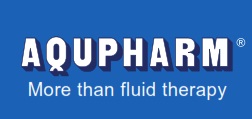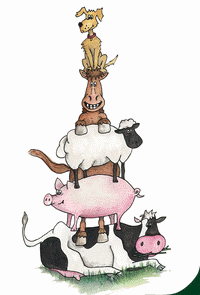Atypical Myopathy (Part 2)
Alexandra G. Raftery MA VetMB MRCVS - 11/10/2016
Atypical Myopathy (Part 2)
Treatment
1. Initial management
Perform clinical examination(including rectal examination if safe), take blood (haematology, biochemistry and Cardiac Troponin I as a minimum; venous blood gas including lactate if available) and urine sample (catheterised or free catch) and make provisional diagnosis in context of history.
There may only be one affected case but all horses and ponies in the field could have been exposed to hypoglycin A and have the potential to develop clinical signs.
a. All horses: Remove all horses from the affected field to stables. Keep them warm, minimise stress and do not transport. Feed adlib forage with carbohydrate based feed if additional calories are required. Supplement with anti-oxidants (Vitamin B, C, E and selenium). Monitor muscle enzymes (CK and AST) sequentially for early evidence of disease. If there are no concerns within five days the horse is unlikely then to develop clinical signs.
b. The affected horse/s: In the early stages most affected horses even if recumbent can be encouraged to rise to move to a stable. On yard management is favoured over referral due to the physical effort and stress of transport (exacerbate myopathy; cause negative energy imbalance and respiratory alkalosis) but this should be balanced with the level of care that can be provided. Discuss with the owner the commitment and estimated costs entailed and the expected prognosis.
Atypical myopathy has a high fatality rate (74%) the majority of non-survivors are euthanized or die within 72 hours of the onset of clinical signs and the remainder within 10 days (van Gelsen et al 2012a). Positive prognostic indicators are normal defaecation, remaining standing, normal mucous membrane colour and temperature. Horses that recover usually regain muscle mass overtime and return to former level of activity. Negative prognostic indicators include recumbency, sweating, anorexia, tachycardia, tachypnoea and dysnpnoea (which can progress to respiratory failure).
i. Once stabled keep warm (rugs, leg bandaging, body temperature intravenous fluids.
ii. Stable should preferably be lined with rubber mats with a deep bed.
Treatment plan
Review blood results and findings of clinical examination to develop a problem list and subsequently a symptomatic and supportive detailed treatment plan. This will need amending on a daily basis. The primary pathology is muscular but there are secondary effects to multiple body organ systems.
Sequential monitoring and nursing care
a.Monitor clinical parameters, demeanour and appetite: frequency dictated by severity of clinical picture.
b.Repeat blood samples to assess hydration status and follow trends of abnormalities identified on initial sample. Levels of muscle enzymes (CK/AST)
c.Urine is the most sensitive marker to monitor for renal damage (e.g. presence of tubular casts).
Recumbent horses should be turned every four hours. Forcing to stand and slinging are not recommended due to exacerbation of clinical signs. Preventative measures and early treatment of decubital ulcers should be instigated (Nout 2005).
i. Fluid therapy
Isotonic crystalloid intravenous fluid therapy (e.g. Aquapharm No11 by Animalcare) is indicated in all cases to address hypovolaemia if present, promote diureis to limit renal damage (myoglobin released from muscle breakdown is nephrotoxic) and correct acid-base balance. The fluid therapy plan should be tailored to the individual animal. Most horses will require a minimum of twice maintenance requirements initially (4mls/kg/hr) and IVFT should be continued at least until urine is grossly normal in appearance. Electrolyte supplementation is indicated as guided by blood biochemistry results.
ii. Anti-inflammatories to taper the inflammatory response and provide analgesia.
Anti-inflammatories (flunixin meglumine 0.5mg/kg-1.1mg/kg i.v. q12hrs) are advocated with caution. Commence intravenous fluid therapy first and establish renal parameters prior to administration. Adjunct analgesia (e.g.opioids) can be utilised if required.
iii. Limit toxin absorption and maintain gastrointestinal function
Administration of laxatives and/or intestinal absorbents (di-tri-octahedral smectite 0.5g/kg or activated charcoal 1g/kg q 12hrs) via nasogastric tube may be useful in the early stages (first 24hours) to reduce absorption of any remaining intra-luminal Hypoglycin A. Horses can develop oral mucosal ulceration, oesophageal obstruction and have reduced faecal transit which can lead to impactions. Isotonic fluid boluses (e.g. Aquapharm No11 by Animalcare) via nasogastric tube are indicated to encourage normal faecal passage at least in the initial stages.
iv. Nutrition
An adequate plane of nutrition is essential for all critically ill animals. Hyperlipaemia is encountered frequently in horses with Atypical Myopathy and is often accompanied by hyperglycaemia. Treatment should aim to reverse the negative energy balance with proactive feeding (early progression to enteral or parental nutrition if required). Estimate weight to calculate daily energy requirements. The diet should be high in carbohydrates and low in lipid content. Insulin therapy may also be required, sequential monitoring of blood glucose and triglyceride concentrations will guide requirement.
-
Provide adlib forage (hay or haylage) and if additional calories are required, small frequent carbohydrate rich feeds e.g. cereal mixes. If appetite is reduced tempt to eat with a buffet selection of feeds. Anti-oxidant supplementation (vitamins B, C, E and selenium) has been associated with survival (address oxidative stress due to acyl CoA dehydrogenase deficiency).
-
Enteral nutrition is indicated if appetite is poor. Multiple recipes are available for formulation (Stratton-Phelps 2008) of diets that can be administered down a nasogastric tube utilising widely available feeds. Oil should be omitted.
-
Parenteral nutrition (without lipid component) can be considered to supplement the calorie requirement (glucose with or without amino acids) if the appetite is poor and placement of a nasogastric tube is difficult.
Prevention
Horse owners should be advised to minimise the exposure of their horses to Sycamore seeds in the Autumn time through removal of Sycamore trees adjacent to the pasture. This is particularly pertinent to the most at risk population (young horses, new to overgrazed pastures, grazing more than 12 hours per day, little supplementary feeding). Supplementary feeding should be supplied to poor pastures but not fed from the ground, hay nets or rings only. If the pasture has had an outbreak the previous Season consider stabling during high risk periods.
Further sources of information
www.myopathieatypique.be Atypical Myopathy Alert Group (AMAG)
CLICK HERE to read Part 1 of this article
This article was kindly sponsored by Animalcare, makers of the Aqupharm fluid therapy range:


References
Stratton-Phelps, M. (2008) Nutritional management of the hospitalised horse The Equine Hospital Manual Edited by Corley, K & Stephen, J. Blackwell pulblishing pp 261-311
Unger, L. et al (2014) Hypoglycin A Concentrations in Seeds of Acer Pseudoplatanus Trees Growing on Atypical Myopathy- Affected and Control Pastures J Vet Intern Med 28; pp 1289-1293
Van Galen, G. et al (2012a) European outbreaks of atypical myopathy in grazing equids (2006-2009): Spatialtemporal distribution, history and clinical features Equine Veterinary Journal 44 pp 614-620
Van Galen, G. et al (2012b) European outbreaks of atypical myopathy in grazing horses (2006-2009): Determination of indicators for risk and prognostic factors Equine Veterinary Journal 44; pp 621-625
Van Galen, G. and Votion, D.M. (2013) Management of cases suffering from atypical myopathy: Interpretations of descriptive, epidemiological and pathophysiological findings. Part 1: First aid, cardiovascular, nutritional and digestive care. Equine Veterinary Education 25; 5; pp 264-270
Votion, D.M. (2012) The Story of Equine Atypical Myopathy: A Review from the Beginning to a Possible End International Scholarly Research Network Article ID 281018
Votion, D.M. et al (2013) Identification of methylenecyclopropyl acetic acid in serum of European horses with atypical myopathy Equine Veterinary Journal 46; pp 146-149
Valburg, S. J. (2012) Seasonal pasture myopathy/ atypical myopathy in North America associated with ingestion of hypoglycin A within seeds of the box elder tree Equine Veterinary Journal 45; pp 419-426
Valberg, S. (2014) Review of the Discovery of the Basis for a Seasonal Pasture Myopathy/Atypical Myopathy AAEP Proceedings Vol 60 pp 184-187
Verheyen, T. et al (2012) Cardiac Changes in Horses with Atypical Myopathy J Vet Intern Med 26; pp 1019-1026
Westermann, C.M. et al (2011) Decreased oxidative phosphorylation and PGAM deficiency in horses suffering from atypical myopathy associated with acquired MADD Molecular Genetics and Metabolism 104; pp 273-278

